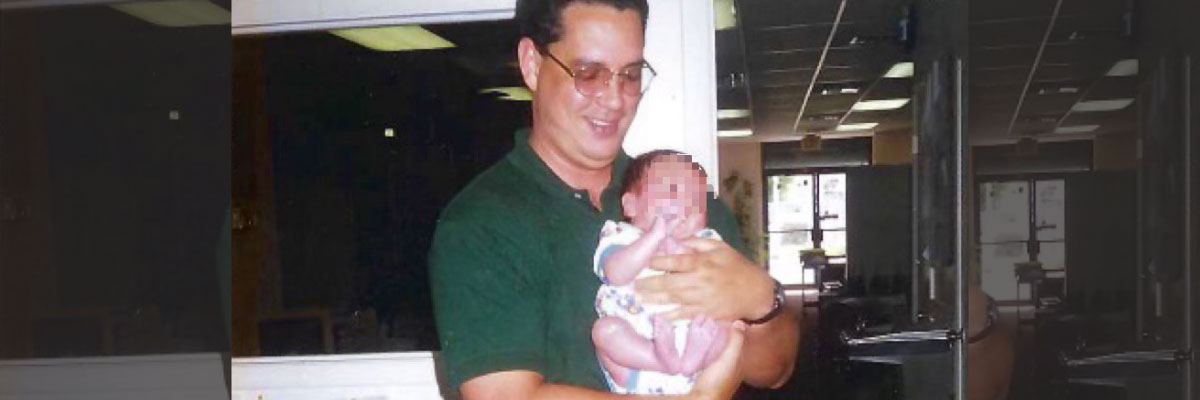Sergio Torres is part of the City of Miami’s Homeless Outreach team. You can find him regularly canvassing the streets of Miami in his eponymous green polo shirt. Sergio has been part of the city’s outreach team since its inception. He works to connect those living on the street with crucial services and housing. Outreach workers are an important access point for those experiencing homelessness in Miami-Dade.
But what exactly do Greenshirts do? We asked Sergio to talk about the responsibilities and challenges of his job, and his role in helping end homelessness in Miami-Dade.
How did you become a homeless outreach worker?
They sent me over to the homeless program that the county used to have back in the day. I started answering their phone and organizing client files. That was a temporary job back then. All the outreach providers had to call into the county to clear people. When my temporary position was over, the city offered me a position with them. That was back in 1999 and I did everything and anything you can imagine. I answered the phone, acted as a bookkeeper, and provided case management. We had to do everything. In 2004, it became a permanent thing, and in 2007 I became administrator of the program as it is today.
Was it challenging being the first?
It was challenging in the sense that there were not as many resources as we have now. Chapman Partnership was just inaugurated. There were plenty of beds in the beginning. We would start with the cluster of people that would line up in front of Camillus House every day. It was challenging, but over the years, we got more resources. More providers. More programs.
What is your most memorable moment on this job?
I remember one story—this was in the beginning when we were seeing the very huge impact of HIV— it was when a lot of people were dying from it. I remember a lady—she was positive. She came by one day, pregnant. She really got to me. She impacted me so much. I did everything and anything to get that lady placed somewhere.
I had totally forgotten about her until she came back one day. I didn’t recognize her. There was this woman standing in front of me in the office holding a baby. She asked, “Don’t you remember me?” I said, no I don’t remember you. How could I? I deal with a lot of people every day. She said, “You placed me all those years back. This is my baby.” She named the baby Sergio after me. I have pictures with me and her and the baby.
What’s the hardest part of your job?
It’s how difficult it is to deal with politicians. That to me is the most difficult part. People don’t seem to understand all the issues around homelessness. Some people are sensitive to it, but a lot are not. They just don’t want to see homeless people in their districts.
The other part is dealing with people who don’t want to come in for whatever reason. You see them on the street after you have made many attempts and tried to get that person help, but they continue to refuse. A month ago, we had a case like that.
It was a guy named Sergio as well. He was sleeping behind the old Macy’s. This was one of my last cases—I’m not sure if it’s the most difficult one, but I remember it. The guy was in a wheelchair. Elderly people, they usually have a lot of other health issues. And he was persistent in refusing help. He died, not long ago. I have a video of him. We took a video of him on New Year’s Eve. I was out with Project Lazarus. I said, let’s do coordination because this guy is going to die out here if we don’t do something. I had one of the nurses explain to him that if he stayed out on the street, he was most likely not going to make it. I tried to have him Baker Acted. But about a month later, he died.
Yeah…we have gone through a few situations like that.
What’s something you want people to understand about homelessness?
People out there don’t have a clear understanding of what this situation is like. And even if you tell them, not too many people feel like we are out there doing anything for these folks. They feel like there’s are not any resources out there. We help out about 6,000 people each year, so there is definitely something being done.
Many people want to feel the joy of giving because of whatever reason they have, but they don't understand that they could be causing more damage. We have all kinds of issues on the streets. Drug use is a fundamental part of why people remain homeless. We have not succeeded in broadcasting the different reasons why people are homeless to the community—what is there for them if they need help, and all the effort, hours, and resources that we have put in—still we are far from seeing the end of homelessness.
For information on how to best volunteer to help end homelessness, check out our get involved page.



